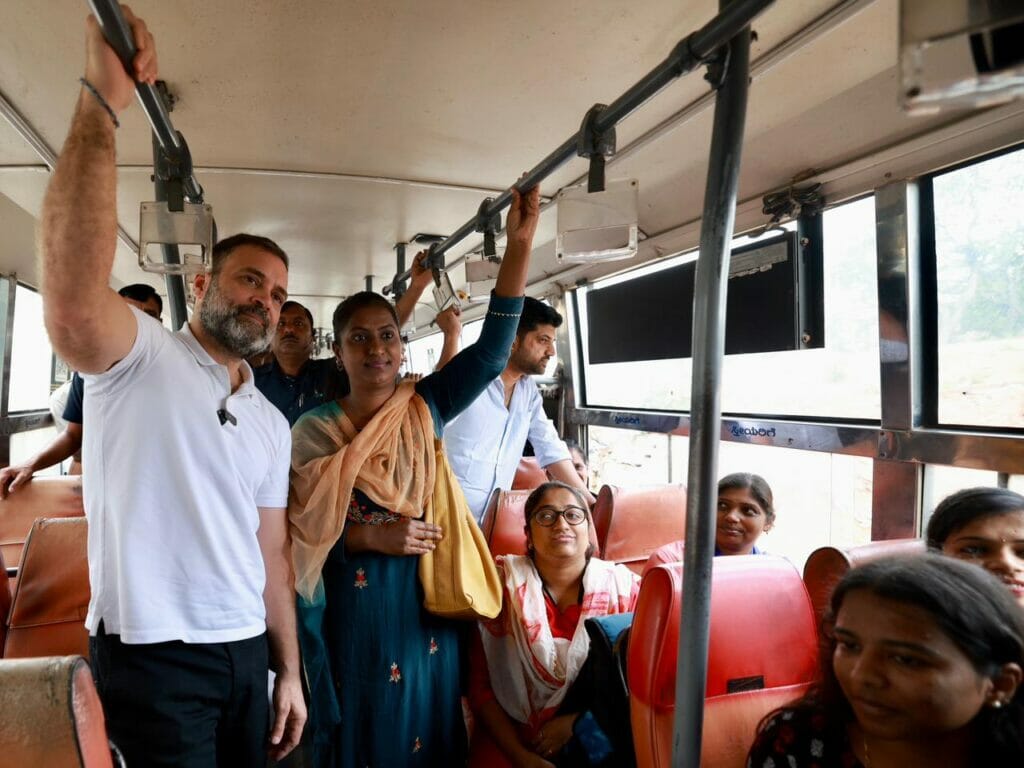Low voter turnout in city, highest in state
According to the Election Commission data released on May 11th, the 11 constituencies, which saw the least polling in the Karnataka Assembly elections, were all in Bengaluru Urban district.
Bommanhalli had the lowest turnout (47.22%), followed by Dasarahalli (48.07%) and C V Raman Nagar (49.07%). Hosakote constituency in Bengaluru Rural district had the highest voter turnout, with 90.33% polling. However, polling stood at 73.19%, the highest in the state since it was formed. Of the total eligible voters of 5.30 crores, 3.88 crores casted their vote on May 10th.
A number of citizens who stood in long queues to vote were disappointed as their names were missing or deleted from the electoral rolls. There were many instances of a family member’s name missing or others deleted without prior notice. Many cases were reported from CV Raman Nagar, JP Nagar, Shivajinagar, RR Nagar, Nagarbhavi, and several other areas. However, citizens said that the BBMP officials did not respond to any of their complaints. Many voters rued that they were made to wait for hours to get the error corrected.
Electoral roll analyst P G Bhat said that the EC should spend resources on correcting the electoral rolls instead of investing its energy and time on awareness drives. The EC and the Bruhat Bengaluru Mahanagara Palike (BBMP), along with resident welfare associations and other civic groups, undertook many campaigns to ensure better voter turnout. Despite these efforts, voter turnout was quite low. Among the four divisions, BBMP Central saw a turnout of 55.5%, BBMP North 52.59%, BBMP South 52.33%, and Bengaluru Urban 57.69%.
Even the BJP’s mega roadshows, covering around 30 kms and 22 constituencies of Bengaluru, seem to have made little difference. The average polling in the urban seats, which are traditionally low voting and BJP strongholds, was 56% – 17% less than the state average of 73.19%.
Source: Indian Express, Deccan Herald, The Hindu
Read more: Bengaluru’s low voter turnout is an indication of systemic failure, not apathy
Election issues
After polls, on May 10th, there was a scuffle between supporters of two political parties at a polling booth at Bhoopalam school in Lashkar Mohalla. But later, it turned into a group clash between two different communities. However, Superintendent of Police, Mithun Kumar G K, said that it was only a scuffle between two political parties, not a communal clash.
Meanwhile, Congress’ complaint to the Election Commission over Prime Minister Narendra Modi’s video appeal to voters on Twitter, just a day before voting, again highlighted a loophole in the rules that allowed political parties to campaign on social media during the “silence period” of 48 hours before polls, under the Representation of the People Act, 1951. The campaigning period ended at 6 pm on May 8th. However, a source in the EC pointed out that Section 126 of the RP Act does not mention social media or campaigning from outside the “polling area”.
Opposition party candidates demonstrated outside a polling station at Mahalakshmi Layout constituency, alleging that BJP workers distributed cash before voters went to exercise their franchise. Even at Banahalli Anganwadi polling booth in the Anekal constituency, people at the booth were spotted distributing money to voters, along with their voter slips.
Source: Indian Express
Exit polls give headstart to Congress
Most of the exit polls have given an edge to the Congress, with three indicating a clear majority. The India Today-Axis My India exit poll said that the Congress will secure between 122 to 140 seats, while News24-Today’s Chanakya exit poll has projected that it will win 120 seats. Only one pollster–News Nation-CGS– has projected that the ruling BJP would win a majority in the 224-member House. Most of the polls predicted that the JD(S) may get 20-odd seats.

Some of the high profile voters included Finance Minister Nirmala Sitharaman, Chief Election Officer of Karnataka Manoj Kumar Meena and his wife, Union Minister and BJP leader Shobha Karandlaje, to Infosys founder Narayan Murthy and his wife Sudha Murthy and actors Dhruva Sarja, Darshan, Duniya Vijay and Upendra Rao. A total of 5,31,33,054 electors were eligible to cast their votes in 58,545 polling stations, where 2,615 candidates were in the fray for the 224-member Karnataka Assembly.
Source: Indian Express
Read more: How can we “recruit” our MLAs when we know so little about them?
Transport issues
On polling day, Bengaluru Metropolitan Transport Corporation (BMTC) services were hit as the public transporter deployed 1,700 out of 6,850 buses for poll duties and a further 350 vehicles for Karnataka State Road Transport Corporation (KSRTC). It also lent 4,100 buses out of a total 8,100 buses in its fleet for election work and hired 350 BMTC buses to be run on intercity routes, especially places like Mysuru, Mandya, Maddur, Tumakuru, Pavagada, Chitradurga and Hosadurga.
Metro ridership fell by almost 50% on polling day.
Source: Deccan Herald, Indian Express
M G Road tops high streets list
The iconic Mahatma Gandhi Road tops the list of India’s best 30 high streets, in a report titled ‘Think India Think Retail 2023’, released by property consultant, Knight Frank. Somajiguda in Hyderabad and Linking Road in Mumbai came second and third in the list. From Bengaluru, Commercial Street (7th), Brigade Road (9th), and Church Street (10th) also entered the top ten.
Bengaluru featured in the list of the maximum number of high streets, totalling seven. The ranking was evaluated on five parameters key to consumers — parking, public transport, average trading density, store visibility and spending quotient.
Source: Indian Express, Deccan Herald
[Compiled by Revathi Siva Kumar]